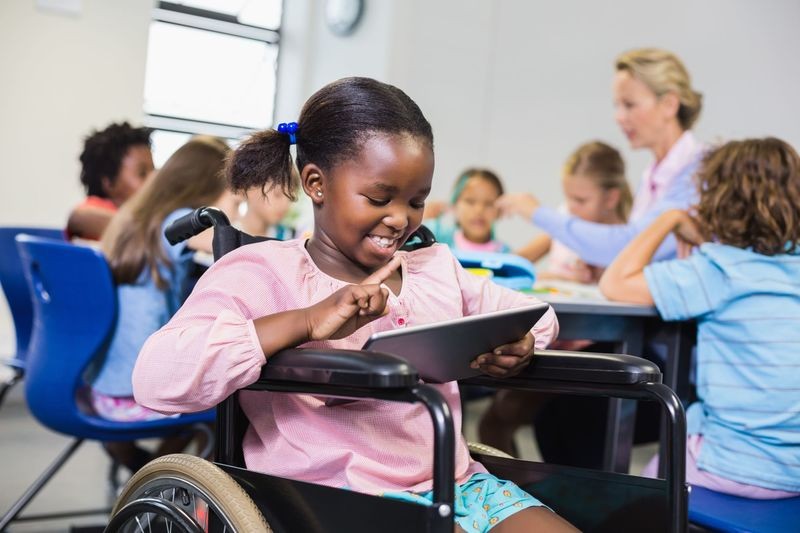In today’s increasingly diverse classrooms, promoting inclusion has become a paramount goal for educators and educational institutions alike. An inclusive classroom environment not only celebrates diversity but also fosters a sense of belonging, respect, and equal opportunities for all students, regardless of their backgrounds, abilities, or learning styles. By embracing inclusivity, educators can create a supportive and nurturing learning environment that empowers students to reach their full potential.

1. Understanding the Importance of Inclusion
Inclusion in the classroom goes beyond merely acknowledging differences; it is a proactive approach that recognizes and values the unique strengths and perspectives of each student. An inclusive classroom recognizes that diversity encompasses various dimensions, including race, ethnicity, gender, socioeconomic status, ability levels, and learning preferences, among others.
By promoting inclusion, educators can create an equitable learning environment that addresses the diverse needs of all students. This approach not only enhances academic achievement but also fosters social-emotional development, cultivates empathy, and prepares students to thrive in an increasingly diverse and interconnected world.
2. Creating a Welcoming and Supportive Classroom Culture
Establishing a positive and inclusive classroom culture is the foundation upon which effective inclusive practices can be built. Educators can create a welcoming environment by:
- Setting clear expectations: Communicate and reinforce expectations of mutual respect, acceptance, and appreciation for diversity from the outset.
- Promoting open dialogue: Encourage students to share their perspectives, experiences, and backgrounds, creating opportunities for meaningful discussions and increased understanding.
- Celebrating diversity: Incorporate diverse perspectives, cultures, and experiences into the curriculum, classroom materials, and learning activities.
- Building a community: Foster a sense of belonging by promoting collaboration, teamwork, and establishing a inclusive classroom community.
By fostering a supportive and inclusive classroom culture, educators can create an environment where all students feel valued, respected, and empowered to learn and grow.
3. Implementing Inclusive Teaching Strategies
Inclusive teaching strategies are designed to address the diverse needs and learning styles of students within the classroom. These strategies include:
- Differentiated Instruction: Tailoring instructional methods, materials, and assessments to meet the unique needs and learning preferences of individual students.
- Universal Design for Learning (UDL): Designing flexible learning environments and curricula that accommodate diverse learners by providing multiple means of representation, expression, and engagement.
- Culturally Responsive Teaching: Incorporating students’ cultural backgrounds, perspectives, and experiences into the teaching and learning process.
- Collaborative Learning: Encouraging students to work together in diverse groups, fostering peer support, and promoting social-emotional development.
- Assistive Technology: Utilizing technology tools and resources to support students with diverse abilities and learning needs.
By implementing inclusive teaching strategies, educators can create an environment that celebrates and values the unique strengths and learning styles of each student, enabling them to thrive academically and socially.
4. Building Partnerships and Fostering Collaboration
Promoting inclusion in the classroom is a collaborative effort that involves partnerships between educators, families, and the broader community. Effective partnerships can be fostered through:
- Family Engagement: Actively involving families in the educational process, valuing their perspectives, and seeking their input to better understand and support their children’s needs.
- Professional Development: Providing ongoing training and support for educators to enhance their knowledge and skills in inclusive practices, cultural responsiveness, and addressing diverse learning needs.
- Community Collaborations: Partnering with local organizations, community groups, and experts to bring diverse perspectives, resources, and support into the classroom.
By building strong partnerships and fostering collaboration, educators can create a comprehensive support system that empowers students and promotes inclusive practices throughout the educational journey.
5. Addressing Bias and Promoting Equity
Promoting inclusion in the classroom also requires actively addressing bias and promoting equity. Educators can take proactive steps to:
- Examine Personal Biases: Engage in self-reflection and professional development to identify and address personal biases that may influence teaching practices and interactions with students.
- Foster Critical Thinking: Encourage students to think critically about societal biases, stereotypes, and inequities, and promote open discussions about these issues.
- Provide Equitable Opportunities: Ensure that all students have equal access to educational resources, support, and opportunities, regardless of their backgrounds or abilities.
- Advocate for Systemic Change: Collaborate with educational leaders, policymakers, and community stakeholders to address systemic barriers and promote equitable and inclusive practices at all levels of the educational system.
By addressing bias and promoting equity, educators can create an inclusive learning environment that empowers all students to reach their full potential and participate actively in society.
6. Celebrating and Amplifying Student Voices
Promoting inclusion in the classroom also involves amplifying student voices and celebrating their diverse perspectives and experiences. Educators can:
- Create Opportunities for Student Expression: Encourage students to share their stories, perspectives, and cultural backgrounds through various mediums, such as writing, art, music, or digital media.
- Incorporate Student Feedback: Seek and value student feedback on curriculum, teaching practices, and classroom dynamics, and make adjustments to better meet their needs and interests.
- Empower Student Leadership: Provide opportunities for students to take on leadership roles, contribute to decision-making processes, and actively shape their learning experiences.
- Highlight Student Achievements: Celebrate and showcase the diverse talents, accomplishments, and perspectives of all students, fostering a sense of pride and recognition.
By amplifying student voices and celebrating their diverse perspectives, educators can create an inclusive learning environment that empowers students, fosters a sense of belonging, and promotes personal growth and academic achievement.
7. Monitoring and Evaluating Inclusive Practices
Promoting inclusion in the classroom is an ongoing process that requires continuous monitoring, evaluation, and adjustment. Educators can:
- Collect and Analyze Data: Gather data on student engagement, academic performance, and overall well-being to identify areas for improvement and measure the effectiveness of inclusive practices.
- Seek Feedback: Regularly solicit feedback from students, families, and colleagues to gain insights and perspectives on the inclusivity of the classroom environment.
- Reflect and Adjust: Engage in ongoing self-reflection and make adjustments to teaching practices, classroom dynamics, and inclusive strategies based on data and feedback.
- Collaborate and Share Best Practices: Participate in professional learning communities and networks to share best practices, learn from others, and stay current on inclusive education research and strategies.
By monitoring and evaluating inclusive practices, educators can continuously improve and ensure that their classrooms remain dynamic, responsive, and truly inclusive environments for all students.
Conclusion
Promoting inclusion in the classroom is an essential endeavor that not only benefits individual students but also contributes to creating a more equitable and just society. By embracing diversity, implementing inclusive teaching strategies, fostering collaboration and partnerships, addressing bias and promoting equity, amplifying student voices, and continuously evaluating and refining inclusive practices, educators can create a learning environment that nurtures the unique strengths and potential of every student.
Inclusive classrooms foster a sense of belonging, respect, and empowerment, enabling students to develop the knowledge, skills, and confidence to thrive in an increasingly diverse and interconnected world. By prioritizing inclusion, educators can positively impact not only academic achievement but also social-emotional well-being, critical thinking, and global citizenship.
Ultimately, promoting inclusion in the classroom is a shared responsibility that requires ongoing commitment, collaboration, and dedication from educators, families, communities, and educational leaders. Together, we can create inclusive learning environments that celebrate diversity, promote equity, and empower all students to reach their fullest potential.





